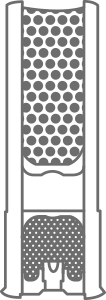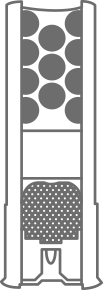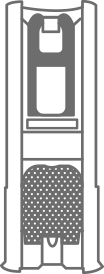STAND YOUR GROUND/CASTLE DOCTRINE
Protecting your home is perhaps one of the most noble reasons to own a firearm. Taking the steps to defend your family, your possessions and your life from criminals is a responsible decision to make, but it’s important that you know your stuff before you ever need to use a gun to protect your home.

WHEN TO SHOOT
Shooting a gun in self-defense is not something that should be taken lightly. When you make the decision to pull the trigger, you should be incredibly confident that you are justified in using deadly force. If you are not, you could land yourself in a world of legal trouble and, quite possibly, jail. Before we continue, it’s important to note that nothing included on this page constitutes legal advice. The purpose of this page is to provide a broad-strokes understanding of what generally constitutes as a justifiable use of deadly force. Ultimately, the decision as to whether or not you should use deadly force in a self-defense scenario will be up to you. With that being said, defensive gun use is most often deemed to be justified in court when the shooter was:
- Being attacked
- Reasonably afraid for their life
- Was stopping an in-progress felony
- Faced with a combination of these situations

WHAT TO DO AFTER YOU SHOOT
The moments after immediately following defensive gun use can have a significant impact on the events to follow. This video from CCW Safe provides some simple steps to follow.

Insurance
If you own a gun for the purpose of self-defense, you will want to look in to some form of self-defense or concealed carry insurance. If you ever need to use a firearm to defend yourself or your family, these types of insurance will protect you from incurring massive legal expenses following your defensive gun use. If you have insurance, your second call (after calling 911) should be to call your insurance provider so they can begin protecting you as soon as possible.
STAND-YOUR-GROUND, CASTLE DOCTRINE & DUTY TO RETREAT
Stand-Your-Ground, Castle Doctrine and Duty to Retreat laws are the primary laws regarding your right to use force (including deadly force) when in imminent danger. In the United States, these laws vary by state, so it's important to know how they apply to you. Check to see if your state is a Stand-Your-Ground, Castle Doctrine Only, or Duty to Retreat state.
STAND-YOUR-GROUND
Under these laws, when you are threatened with imminent deadly force and you have the ability to retreat, you don't have to. Stand-Your-Ground laws state that you can stay where you are and defend yourself. These laws often allow for self-defense anywhere you have the right to be, but some states place restrictions on where you are allowed to stand your ground.
CASTLE DOCTRINE
Castle Doctrine laws generally state that you have the right to protect your home or other legally occupied place (such as your vehicle). Some states have castle doctrine laws only, meaning that, while in public, you still have a duty to retreat.
DUTY TO RETREAT
Under Duty to Retreat statutes, you are required to retreat to a place of safety if at all possible when posed with a serious threat. Under these laws, gun owners are only allowed to defend themselves when retreating is not possible or when retreating would put them in greater danger.
1911s & Shotguns
When it comes to home defense, the two most common firearm platforms by far are shotguns and pistols. Each of these choices comes with its own set of qualities and limitations. If you're thinking about purchasing a shotgun for home defense, you'll want to consider much of the same criteria as you did with a pistol.
WHICH TO PICK: SHOTGUN OR PISTOL
If you own a gun for the purpose of self-defense, you will want to look in to some form of self-defense or concealed carry insurance. If you ever need to use a firearm to defend yourself or your family, these types of insurance will protect you from incurring massive legal expenses following your defensive gun use. If you have insurance, your second call (after calling 911) should be to call your insurance provider so they can begin protecting you as soon as possible.
Pistols
A pistol is arguably the most versatile self-defense weapon, because it can be used for home defense, concealed carry or kept in your car - check out these five tips for concealing your 1911 at home.
Not that you see what makes a pistol so handy to holster at your side, discover the best 1911 handguns for home defense.
When you fire your weapon in your home, you open yourself up to concerns you don't usually have in an outdoor shooting environment. When picking a pistol for home defense, you'll want to consider how easily its rounds can penetrate a wall. After all, if you have family members in other rooms in your house, you want to ensure that they are safe.
One of the most obvious concerns gun owners have when picking a gun for home defense is how successful that firearm will be at stopping an intruder. Depending on the pistol, placing shots on someone who has broken into your home can be difficult and, if the rounds are small, they may not stop the intruder from advancing into your home unless you place your shots well.
This is the most fiercely debated element of home defense weapon selection. Depending on your situation, the level of maneuverability needed by your home-defense firearm can vary. Pistols are seen as the most maneuverable option for home defense because of their short barrel length and small size—which allows you to clear rooms more easily than two-handed firearms, such as shotguns. If your house has a lot of hallways, or if you have family members in other rooms, a pistol may be the best choice to protect your home.
Shotguns
When it comes to home defense, the shotgun is another popular option that comes with its own set of qualities and limitations. If you're thinking about purchasing a shotgun for home defense, you'll want to consider much of the same criteria as you did with the pistol:
For shotguns, the penetrating power of the weapon depends upon the type of ammunition that you're shooting. If you're shooting slugs, you'll have a much higher chance of penetrating walls than you would with buckshot. Similarly, the gauge of the shotgun will have an impact on the round's ability to go through walls.
This is one of the biggest benefits of using a shotgun for home defense. Shotguns are famously excellent at stopping intruders in a close-quarters situation, such as a break in. If the other restrictions of a shotgun don't hold you back, it will certainly be the most effective way to shut down a criminal.
Home defense is different from other types of shooting because it is close quarters combat. With a shotgun's long barrel, maneuvering down hallways and through doors safely is significantly more difficult than it would be with a one-handed weapon, such as a pistol. If you are able to barricade yourself in a room, and don't have family members in other parts of the house to protect, maneuverability doesn't matter as much as stopping power.
In a home defense situation, you want to ensure that you have the ability to place multiple shots on a target before they are able to do harm to you or your family. For this purpose, a semi-automatic shotgun is much more effective than a pump action or double-barreled over-under shotgun.
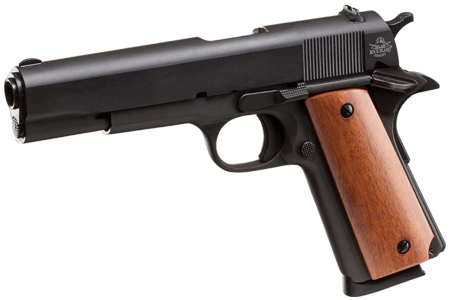
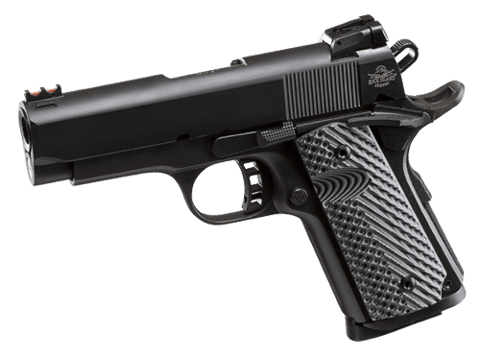
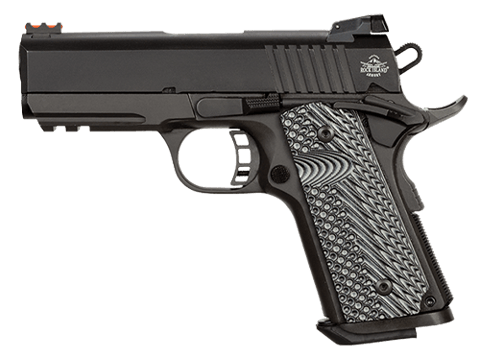
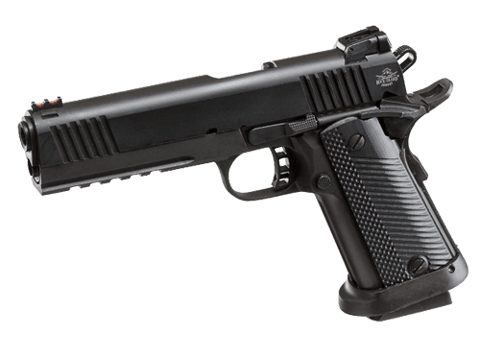
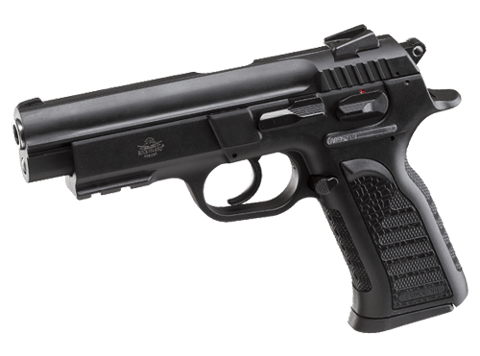

HOME DEFENSE TRAINING Techniques & Drills
To be properly prepared for a home defense situation, it’s important to train often and effectively, which doesn’t have to be as expensive as it sounds. The keys to proper training are planning and repetition. If you can anticipate how a home invasion might go and if you have properly prepared for that situation, you will have a much better chance of properly defending yourself than someone who simply keeps a handgun in their nightstand.
Scenarios
Home Invasion
A home invasion is every homeowner’s worst nightmare. In this situation, having the right tools and training to defend yourself and your family is vital. When dealing with a home invasion, there are a few things you will want to remember:
Distance
As with every self-defense situation, the best way to protect yourself from those who would do you harm is to put as much distance between them and yourself as possible. In a home invasion situation, this could mean leaving the house entirely or, if that’s not an option, barricading yourself in a different part of the house, away from the intruder.
Communication
Having a firearm for self-defense is a great first step to take in defending your home, but—if you are able to safely contact the police—it’s important to do so as soon as possible. Bringing in backup will help ensure you make it out alive. Remember, it is their full-time job to protect and serve.
Preparation & Response
Should the situation require that you use your firearm for self-defense, it is important to be prepared to respond to a would-be intruder. Practice your response by thinking about what you would do if someone broke into your home. Where would you barricade yourself? Where might they be in relation to that barricade? Once you know the types of distances you may be dealing with, you can head to the range to practice shooting at that distance.
One vs. Many
There’s a reason so many people keep a gun in their home—you can never know when or how you may need to defend yourself. In situations where there are multiple attackers, it may be difficult to know what to do unless you’ve prepared beforehand. Check out these videos on how to defend yourself in close combat and group attacks:
Handgun Drills
The 5 and 5 Drill
For gun owners focused on self-defense, operating quickly and efficiently in the heat of the moment can be the difference between life and death. The 5 and 5 Drill aims to train your muscle memory, speed and accuracy when operating your firearm quickly. Check out this video from the USCCA explaining the drill:
The Square Drill
The square is a classic drill designed to prepare the shooter to reposition quickly, while putting shots on target and maintaining accuracy. Arrange four cones in a square with five yards on each side. Set up three targets at approximately ten yards. Start in a corner and work your way around the square, firing 2 shots at each target from each corner.
Multiple Targets
The Headshot Drill
This drill is incredibly simple, but difficult for a number of shooters. The Headshot Drill conditions shooters to avoid jerks and flinches. Set up one target at 20 yards, take aim, and place five consecutive headshots. Advanced shooters can combine this drill with the 5 and 5 for added difficulty.
The Bill Drill
The Bill Drill is all about rhythm and accuracy. Fire six consecutive rounds at your target’s center mass with a steady rhythm. This drill is intended to help shooters with recoil management, sight acquisition and shot-to-shot placement. Check out this video with Armscor’s JJ Racaza practicing the Bill Drill at the range:
Utilizing Barricades & Cover
In a home defense situation, you have the advantage of knowing the layout of your home better than a home invader. Armscor pro JJ Racaza explains how to properly make use of barricades and cover in this video:
Handgun Techniques
Practice Defensively
How people use guns at their local range isn’t necessarily the way they would be best-served in a defensive scenario. You don’t have the luxury of casually checking your targets after every five rounds or slowly swapping out magazines.
While you won’t be able to perfectly replicate a self-defense scenario at the range, you should spend time practicing with a sense of urgency or pressure. Work on building up the speed of your draw, follow-up shots and target transitions. Consider using a shot timer to measure your performance and set goals.
Also consider firing from different positions, such as behind cover, crouched or on your back (assuming you’re at a shooting location that permits this).
Seek Guidance
Another route to consider in honing your defensive pistol skills is to find a defensive shooting course with professional instructors. If you have the basics, firearm safety and fundamental techniques all down, then more advanced classes geared toward shooting defensively could prove valuable.
They can also be great for learning how to defend yourself with a pistol in different scenarios, such as road rage incidents or a variety of home-invasion situations.
Identify Your Target
If a home invasion happens at night, are you ready? Waking up in the middle of the night, half-asleep and stumbling around doesn’t make for great defensive technique—especially when all your lights are off.
Have your defense pistol equipped with night sights and flashlight. Think about how you can position yourself to be obscured in darkness when turning on the lights on the intruder.
Choose Ammo Wisely
Over-penetration is a common concern with self-defense shooting. Expanding rounds are typically advised for self-defense ammunition due to less penetrating power. Consider hollow-point or soft-point rounds, as opposed to full-metal jackets, when looking for defensive ammo.
Prepare for the Worst
When you practice your defensive shooting, you should also prepare to grapple with situations when things go wrong. Just because your ammo hasn’t stovepiped or a primer hasn’t failed in your range outing doesn’t mean it can’t or won’t happen when you least want it to.
Magazine Changes
In a life or death scenario, a quick magazine change can make all the difference in the world. In this video, Athena Lee of Team Armscor shows off her method for mag changes. It all comes down to preference, but this is a great solution for those that might not want to change the grip on their strong hand as they execute their reloads.
Improving Accuracy
Shoot Better by Shooting Slower
World champion competitive shooters can shoot blazingly fast and still hit their targets, but they didn’t get to that point overnight. Take your time, and make sure you keep the fundamentals top of mind.
Don’t forget to have a firm grip, a good stance and smooth trigger pull. When you master the basics, you’ll improve your accuracy and build speed over time.
Stop Comparing Yourself
It’s easy to be hard on yourself if you’re always comparing your performance to others. You can certainly pull away pointers from experienced shooters, but don’t give up if you’re not making the same shots as them.
Everyone progresses at a different rate and practices with varying degrees of enthusiasm for the sport. So the next time you’re at a range and you feel less than adequate, don’t let it get to your head.
Keep Practicing
Maybe it sounds clichéd and incredibly obvious, but practice makes perfect. If you want to up your game, you need to practice consistently and make corrections to your technique when necessary. If you feel like your progress has plateaued, consider some new drills or ask a fellow shooting buddy to watch you go through a couple mags and see if he or she picks up on something you’re not.
Stance, Grip & Trigger
Stance
When it comes to shooting a handgun, there are three widely accepted shooting stances. We’ll go through the proper form for each of them here, so that you can pick and practice the one that suits your shooting style.
Isosceles
The isosceles stance is a tried and true shooting stance that is characterized by standing square to the target with your feet approximately shoulder width apart. As with the other shooting stances, you’ll want your knees to be slightly flexed and the upper-half of your body to be leaning slightly towards the target. Your arms should be fully extended without locking your elbows.
Weaver
Unlike the isosceles stance, the weaver is characterized by dropping your firing-side foot back in your stance to create greater forward/backward stability. In this position, your firing-side arm is fully extended, with your support arm bent at the elbow and your legs are slightly bent at the knee.
Fighting
The fighting stance, sometimes called a modified weaver, is a shooting position where you drop your firing-side leg back slightly from a square position, approximately at the instep of the support foot. Once again, you’ll bend your knees slightly and lean into your shots. Firing from this position eliminates the stability issues associated with the isosceles stance while still allowing you to stand relatively square to your target.
Grip
Your grip is without a doubt the most important part of your shooting form when it comes to controlling recoil and muzzle flip, but it’s amazing how few shooters take the time to perfect this crucial element. In order to ensure your shots land on target, shooters need to hold their pistol as high as possible without touching or interfering with the slide. By doing this, you limit barrel rotation and make landing follow-up shots on target that much easier.
Next, you’ll want to place the thumb of your supporting hand on the frame of your pistol, parallel to the slide but, once again, avoiding any actual contact with it. From here, you’ll wrap your supporting fingers around those of your firing hand and apply slight pressure. This will help to avoid flinching or pushing your sights off target as you pull the trigger. You’ll also want to make sure that the thumb of your firing hand does not interfere with the slide lock, as this would prevent the slide from locking open after emptying the magazine.
Trigger
All too often, shooters tuck the trigger into the first knuckle of their trigger finger when shooting or only use the very tip of their finger. These methods will result in pushing or pulling your shots as you pull the trigger, which will prevent them from landing on target. The trick to a successful trigger pull is to place the trigger between the pad of your pointer finger and its first knuckle. This will help you to pull the trigger straight back, without drawing your shots off target. For more on trigger control, check out our trigger control video below.
BIRDSHOT
Because bird hunting is such a common shooting application for shotgun owners, birdshot tends to be one of the most widely available types of shotgun ammunition. Birdshot is made up of dozens of smaller round pellets designed for killing birds. As you might guess, these smaller rounds aren’t quite as effective at stopping human threats as they are at stopping birds. However, if it’s all you have on hand, birdshot is definitely better than nothing.
BUCKSHOT
Buckshot is like birdshot but scaled up in size. Instead of dozens of smaller pellets, buckshot is made up of a handful of larger pellets that are much more likely to stop a home invasion. Because of this, buckshot is a widely accepted form of ammunition for home defense.
SLUGS
Slugs are without a doubt the most devastating of the three types of shotgun ammo listed here. Instead of pellets, slugs are made up of a single large chunk of lead that can cause considerable damage to their target. While slugs could be very successful at stopping a home invasion, experts often advise against their use in home defense applications due to their ability to shoot through walls—which could potentially injure loved ones hiding in another room.
Handguns - Picking Your Ammo
9MM
The 9MM round is fast and small, which means it often offers higher velocity in the air and allows for more rounds to fit in a magazine. These rounds make for great range rounds and stand their own in self-defense applications but, when it comes to home defense, they are generally viewed as a lesser option compared to their 45ACP and 10MM counterparts.
45ACP
The 45ACP round is the biggest and slowest personal defense round. While this may seem like a drawback at first, it effectively provides the 45ACP round with more momentum in the air, which makes it particularly devastating to your intended target. The real drawbacks to 45ACP ammo come from its size and expense. You’ll spend more on a 45ACP round than a 9MM, and you won’t be able to fit as many into an easily concealable magazine.
10MM
The 10MM round is a hybrid of the 9MM and the 45ACP. It is bigger than the 9MM and faster than the 45ACP. It serves as a nice middle of the road option for shooters who want some of the qualities of a 9MM with some of the power of the 45ACP.
Casing Considerations
When it comes to casings, there are two primary categories of bullets: full metal jacket (FMJ) and Hollow point. Each category has its own set of advantages and disadvantages.
Hollow Point
Hollow point bullets are meant to expand upon impact with their intended target. The Hollow tip of the bullet causes the round to expand outward and, thus, cause greater damage to the target while simultaneously staying inside of the target without passing through. These rounds are generally more expensive, but they are ideal for law enforcement, home defense and self-defense scenarios.
Full Metal Jacket (FMJ)
Full metal jacket rounds do not expand in the same way as hollow point rounds, which generally makes them less lethal to their intended target. However, a full metal jacket round is also more likely to pass through the intended target, which could put the surrounding area and nearby individuals in jeopardy.
SAFETY CONSIDERATIONS
GUN SAFES/LOCKS
There are a wide variety of locking mechanisms available in gun safes today. From digital to mechanical to biometric and everywhere in between, the options for how you secure your firearms are large in number. Mechanical locks are simple, traditional and durable, with the drawback being that they can take longer to open and don’t have some of the features that make digital and biometric safes so popular. Digital locks are popular because they often come with features such as multiple combinations, user changeable combinations and backlit, easily readable keypads. The drawback to these locks is that they require electricity to operate, so they can fail randomly and have a limited lifespan. Biometric locks come with a similar set of complications but afford gun owners the ability to limit safe access by person—meaning only previously determined individuals can access the safe. For more information on gun locks, check out this great write up by GunsAmerica: Understanding Lock Technology.
ACCESSIBILITY
Another major consideration when picking a gun safe for your home is how accessible that safe will be. A safe in your garage will likely keep your guns secure but will make it very difficult to access your gun in the event of a home invasion. Smaller, more accessible safes are easier to keep in a bedroom or under your bed, but they may be more easily compromised by smash and grab thieves.
KEEP OUT OF REACH OF CHILDREN
If you’re a parent, this is the most important aspect to keep top of mind - keep firearms out of reach of your kids. Kids can get snoopy, and you don’t want to risk them playing with a gun, even if it’s unloaded. If you have children, always keep your guns and ammo safely locked away.
Teaching your kids about gun safety and respecting firearms can help prevent accidents in the event your kids do find one in your home. A small, biometric gun safe, such as this one, would be a good bedside option if you have kids but still want relatively quick access to your 1911 in the case of home invasion.
DON’T LET OTHERS KNOW
Don’t let untrusted individuals know where firearms are located in your home, or if you own guns period. If you regularly host visitors, you don’t want to risk someone with bad intentions stealing or planning to steal your firearms.
This article on a home invasion in Americus, Georgia, might be an extreme example, but it serves as a good reminder why keeping your gun collection on the down-low is a wise idea.
COVER MULTIPLE ROOMS
If you’re a 1911 guru and have more than one, then you might want to consider keeping them in multiple rooms. As always, remember to store them safely and out of sight. You can get pretty sneaky with furniture made specifically for concealing guns. Check out tactical walls or covert cabinets for a few options.
Keeping one in your bedroom should be your first priority, but the living room or office are other good choices if you have the luxury of owning more than one concealable gun.
LOADED OR UNLOADED?
Should you have your concealed pistol loaded or unloaded? Well, the best suggestion we can give is to use your best judgement. If you have kids at home, you shouldn’t keep loaded guns around, except for perhaps in a locked bedside safe during the nighttime.
Don’t Get Careless
Don’t get too comfortable with your surroundings and start leaving your guns lying around out in the open. Maybe it surprises you, but people can get sloppy with their safety practices once they get used to being around firearms.
